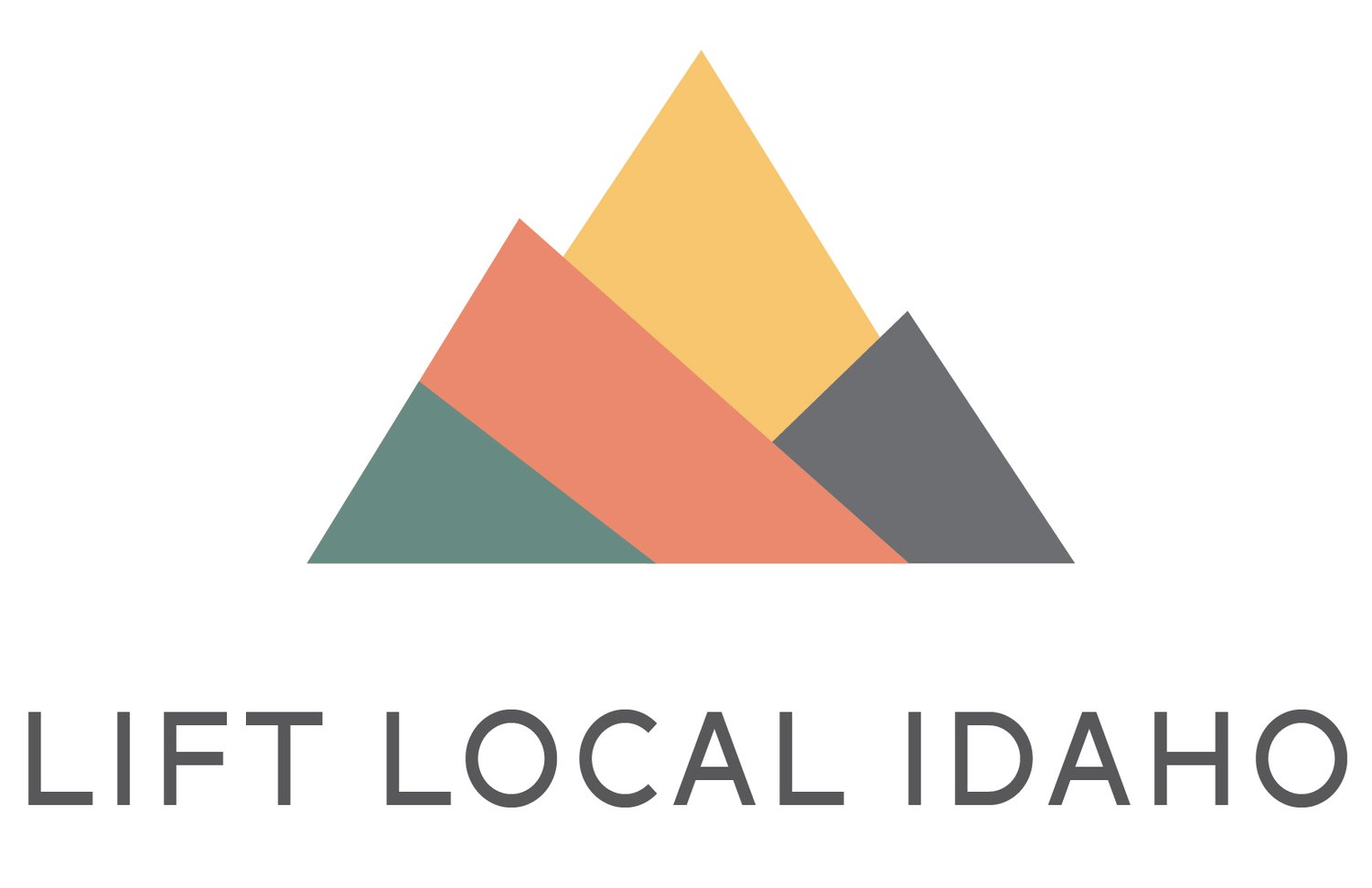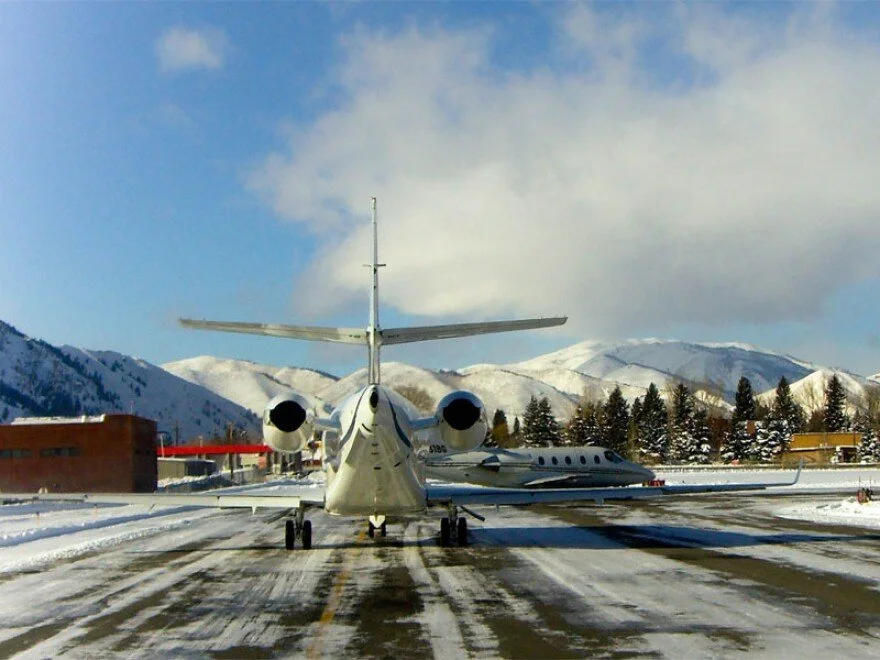What is local option?
Often referred to as a “penny tax” or a “tourist tax,” a local option tax is a temporary sales tax allocated exclusively toward funding local projects — including infrastructure, street maintenance, water and fire services, and other community needs. Funds accrued through local option don’t fund state projects, but local ones, shifting reliance away from raising property taxes.
Let’s break it down:
To put it simply, local option is the choice to employ the funding tool — it gives voters the agency to decide what their community needs are and how they want to develop solutions.
Join the conversation here.
What could local option do for Idaho’s cities?
The following chart displays local option funding predictions for Idaho’s sixteen largest cities.
Developed by Jonathan Spendlove, Planning & Zoning Director for the City of Twin Falls, these figures are estimates and derive from 2022 Population Data, Economic Census Data, 2020 Idaho Sales Tax Revenue, and 2022 Revenue Sharing data.
Local Option Case Studies
Nearly three-quarters (73%) of Idaho voters say growth in the state is happening “too fast” – across regions, age groups, and political spectrum.
Most Idaho cities and counties do not have the tools they need to meet these increasing demands. Current law prohibits voters outside of resort towns with more than 10,000 residents from implementing local option to fund specific community needs.
That’s exactly what our coalition is aiming to change.
Nearly all tax revenue collected in Idaho – including personal and business income taxes, capital gains taxes, gas taxes, and sales taxes – flows to the State and is controlled by the Governor and Legislature. Only a small percentage of sales tax revenue (11.5%) gets sent back to local communities, making them dependent on property taxes and development fees to fund community necessities. In other words, because almost all tax authority in Idaho rests in the State government, local communities are paralyzed when it comes to lifting themselves up.
If we are going to meet the needs of our communities, the Legislature must give voters across Idaho the option to fund local projects if and how they choose.
Why now?
FAQs
-
Across the U.S., projects funded by local option have included infrastructure (anything from traffic signs to broadband) and public services (anything from water treatment to public safety).
In Idaho, local option might be used to:
Address parks and trails in Kootenai County
Build a water treatment plant in Eastern Idaho
Build new Vallivue School District schools in Caldwell, allowing for continued development and economic prosperity without overcrowding schools
Fund a sewage system in Southwest Idaho
Upgrades to the Latah County courthouse or sheriff’s office
-
From wastewater to public safety, cities across Idaho have urgent infrastructure and public service demands.
Recently, the Association of Idaho Cities and Clearwater Financial ran a statewide survey assessing each of Idaho’s 199 cities’ infrastructure needs. The results (which are still trickling in) are available here on the Lift Local Idaho website.
-
37 states in the U.S. utilize local option, including all of Idaho’s neighbors but one.
Most famously, local option funded the Wasatch Front’s transportation system in Utah and the revitalization of Oklahoma City.
Here in Idaho, 21 communities in Idaho rely on local option taxes, often referred to colloquially as “tourist taxes,” to fund infrastructure projects. Currently, this list includes Bellevue, Bonners Ferry, Cascade, Crouch, Donnelly, Driggs, Hailey, Irwin, Kellogg, Ketchum, Lava Hot Springs, Mackay, McCall, Ponderay, Riggins, Salmon, Sandpoint, Stanley, Sun Valley, Swan Valley, and Victor.
Per Idaho law, to utilize local option taxes, communities must be “resort cities” with fewer than 10,000 residents. These communities have a choice in what’s taxed; some apply local option to every purchase eligible for sales tax while others limit the local option tax to tourism-related fees, including lodging, alcohol, and restaurant purchases.
Once communities outgrow the 10,000 resident cap, they are prohibited from utilizing local option. This includes the city of Sandpoint, which has accrued over $7 million from local option taxes since 2016. Currently, with a population growing at a rate of 5.6% annually, the city administrators of Sandpoint expect the city to lose its ability to harness that funding in the next two calendar years, 85% of which comes from non-city residents.
-
Unlike sales or property taxes, a local option tax is not issued by the State. They are proposed by local governments and voted on for approval by local residents. If passed, funds are collected by the state, distributed back to the community they were sourced from, and levied by that city or county.
-
No. Local option is popular across party lines, industries, demographics, and regions of Idaho.
To be more specific,
In a recent legislative survey of the Moscow Chamber of Commerce, — 77 percent of respondents agreed that “local government should be granted local option taxing authority by the Legislature.”
In their third annual statewide survey, Boise State’s School of Public Policy found that two-thirds of Idahoans “favor extending local option taxation authority to every city in Idaho… a majority say they would favor such a plan in their city when given examples of what resulting revenue could fund.”
-
Lift Local Idaho’s mission is to give voters in all local jurisdictions in Idaho the choice and the tools to directly address their community needs, including the ability to utilize municipal revenue to fund local infrastructure projects or enhance local services like water networks and fire departments.
-
We are an active and growing statewide coalition of citizens, civic organizations, chambers of commerce, business leaders, large employers and small businesses, advocacy groups, and local elected officials working to give local jurisdictions the ability to directly address their community needs.












